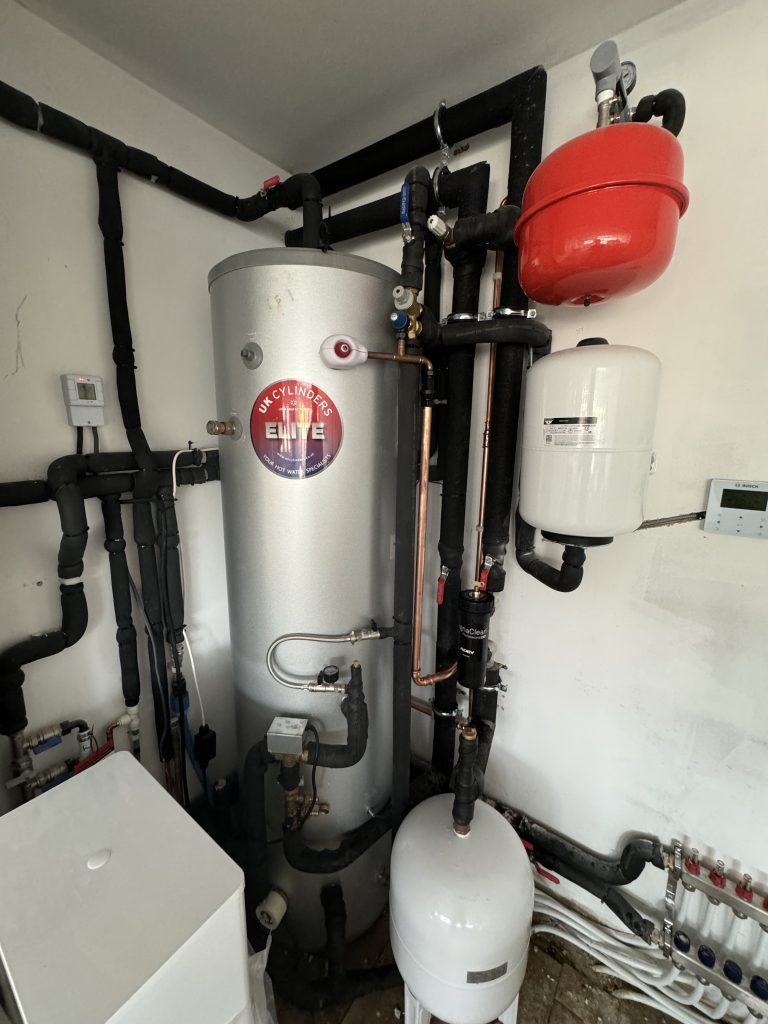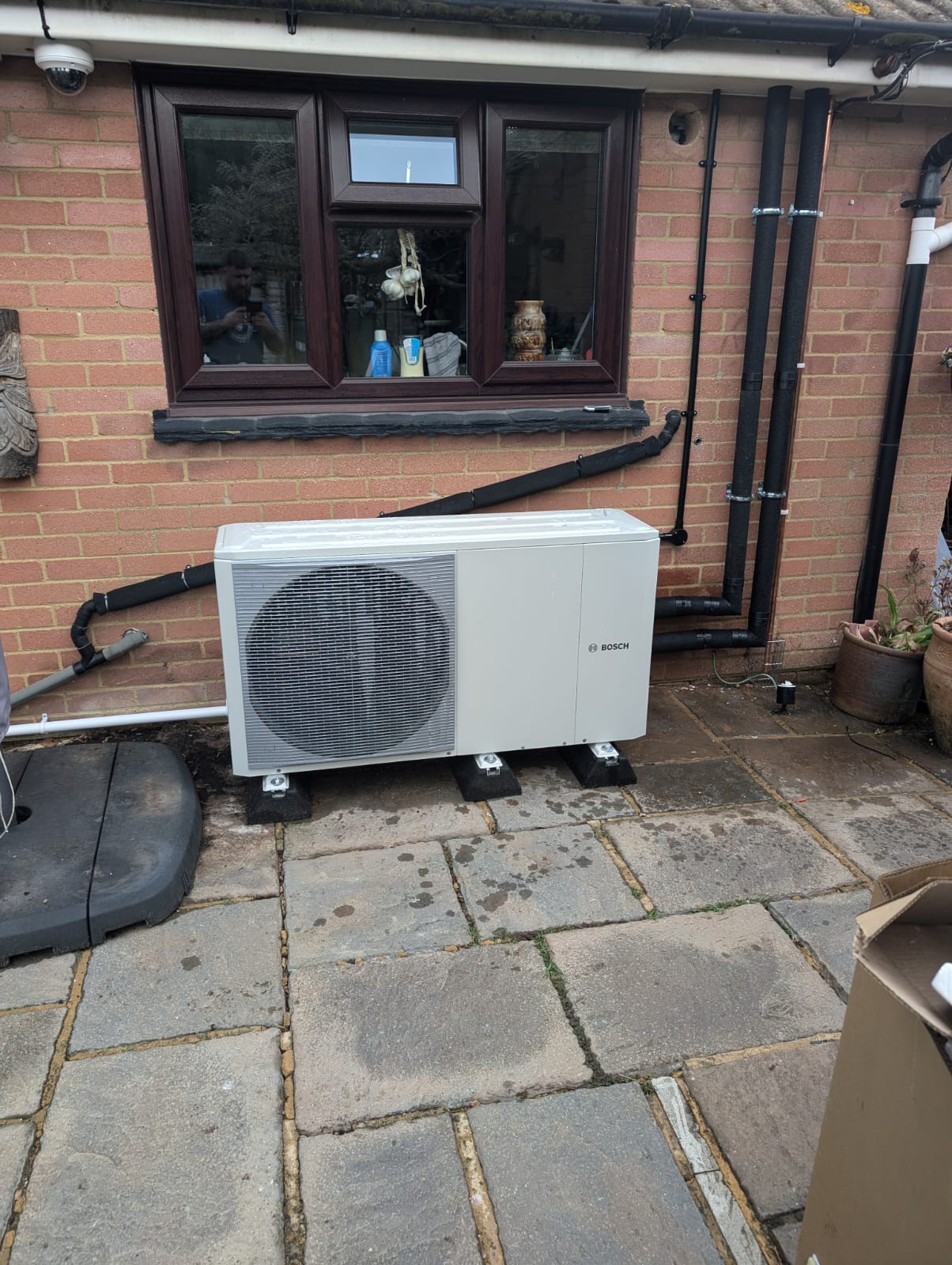Choosing the Right Heat Pump for Your Property in Kent
Air vs Ground Source… Which should you consider? As we continue to move towards sustainable energy solutions, many homeowners are considering switching to heat pumps. These energy-efficient systems provide heating and hot water by harnessing renewable energy, reducing reliance on fossil fuels. Two popular types of heat pumps on the market are Air Source Heat Pumps (ASHPs) and Ground Source Heat Pumps (GSHPs). But how do you know which is the best fit for your home?
How Do Heat Pumps Work – Air vs Ground Source
Before we delve into the differences, let’s briefly explain how heat pumps work. Both air source and ground source heat pumps use a process known as the vapour-compression refrigeration cycle to extract heat from the environment and transfer it into your home. Even when it’s cold outside, these systems can capture heat from the air or ground and provide warmth indoors.
Heat pumps are more energy-efficient than traditional boilers because they use renewable energy. For every unit of electricity used, they can generate 3-4 times more heat. This makes them a cost-effective and environmentally friendly option.
What Is an Air Source Heat Pump?
An Air Source Heat Pump (ASHP) extracts heat from the outside air, even at temperatures as low as -15°C. It works similarly to a refrigerator but in reverse, absorbing heat from the outdoor air and transferring it to your home via a refrigerant. This heat can be used to warm your home or heat your water.
ASHPs come in two types:
- Air-to-water: This type heats your central heating system, ideal for radiators or underfloor heating.
- Air-to-air: This type circulates warm air through fans inside your home.
What Is a Ground Source Heat Pump?
A Ground Source Heat Pump (GSHP), on the other hand, extracts heat from the ground. This is possible because the ground maintains a relatively stable temperature throughout the year. The system involves burying pipes underground, where a water and antifreeze solution absorbs heat. This heat is then compressed and transferred to your home.
GSHPs are highly efficient and work particularly well with underfloor heating systems or low-temperature radiators.

Key Differences: Air vs Ground Source Heat Pumps
1. Installation Costs
One of the most significant differences between the two systems is the cost of installation. Air Source Heat Pumps are generally more affordable to install because they require less groundwork. You only need an outdoor unit, which can be installed on a wall or placed in your garden.
In contrast, Ground Source Heat Pumps require extensive excavation to lay the underground pipe network. This can involve digging trenches or boreholes, which can add considerably to the upfront cost.
- ASHP installation cost: £7,000 to £11,000
- GSHP installation cost: £13,000 to £35,000
It’s worth noting that the Boiler Upgrade Scheme might help offset some of these costs. More infomation can also be found on the OFGEM website.
2. Efficiency
While both types of heat pumps are more efficient than traditional heating systems, GSHPs tend to be more efficient than ASHPs because they rely on the relatively stable temperature of the ground. This means they can maintain a higher Coefficient of Performance (COP), which is a measure of efficiency. On average, a GSHP will have a COP of 4 or more, meaning it generates four units of heat for every unit of electricity consumed. ASHPs typically have a COP of 2.5 to 3.5.
However, in milder climates or in well-insulated homes, the efficiency difference between the two systems may not be as noticeable. Before installation, we always recommend a thorough heat loss survey to determine the right size system for your home.
3. Space Requirements
ASHPs take up less space than GSHPs. You’ll only need a relatively small outdoor unit and space to install the system. It’s ideal for homes with limited land or in urban areas where outdoor space is at a premium.
GSHPs, on the other hand, require a substantial amount of land for the installation of ground loops or boreholes. This makes them better suited to properties with large gardens or rural homes with plenty of outdoor space.
4. Planning Permissions
In most cases, ASHPs do not require planning permission, making them quicker and easier to install. However, if you live in a listed building or a conservation area, you may need to check with your local planning authority.
GSHPs may require planning permission, especially if boreholes are being drilled. This is something to factor into your decision-making process, as it could delay installation.
5. Noise Levels
Air Source Heat Pumps can generate some noise from the external fan unit. While modern systems are designed to be quieter, it’s something to consider if noise is a concern for you or your neighbours.
Ground Source Heat Pumps, on the other hand, are much quieter as they don’t rely on an outdoor fan. The noise generated is mostly from the heat pump unit itself, which is typically housed inside the home.
Which System Is Right for You?
Ultimately, the choice between an Air Source Heat Pump and a Ground Source Heat Pump will depend on your property, budget, and personal preferences. If you have a large garden and are looking for the most efficient option, a GSHP could be the best choice, despite the higher installation costs. However, if space and cost are concerns, an ASHP provides a more affordable and flexible solution.
Both systems offer excellent energy efficiency, lower carbon emissions, and long-term savings on your heating bills, making them a great choice for any homeowner looking to reduce their environmental impact.
Whether you opt for an Air Source Heat Pump or a Ground Source Heat Pump, making the switch to renewable energy is a fantastic way to future-proof your home’s heating system. Contact us today for expert advice on heat pump installation or to request an estimate.


No responses yet